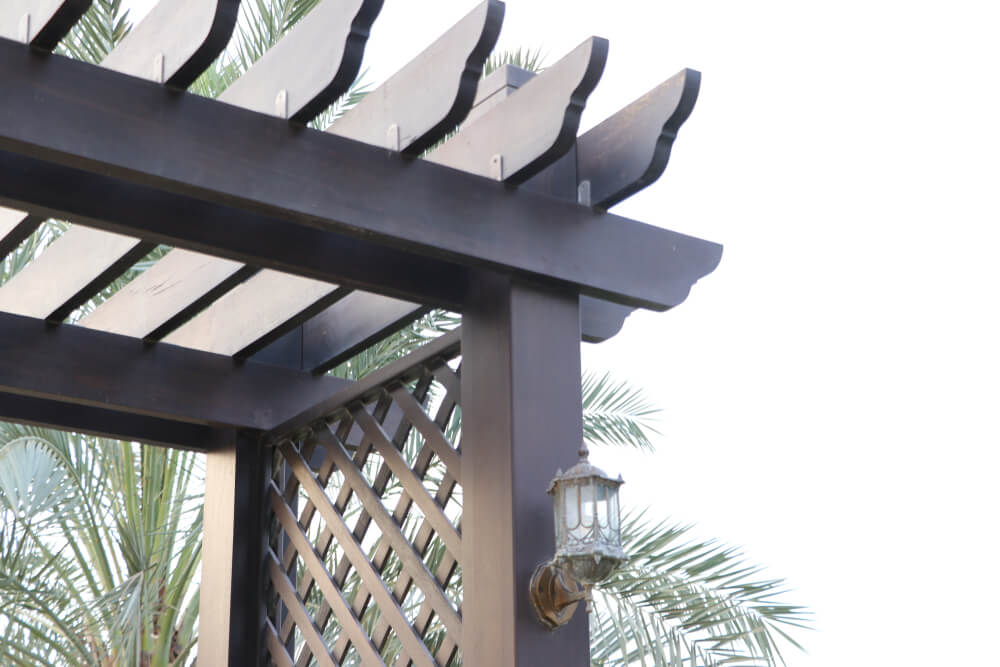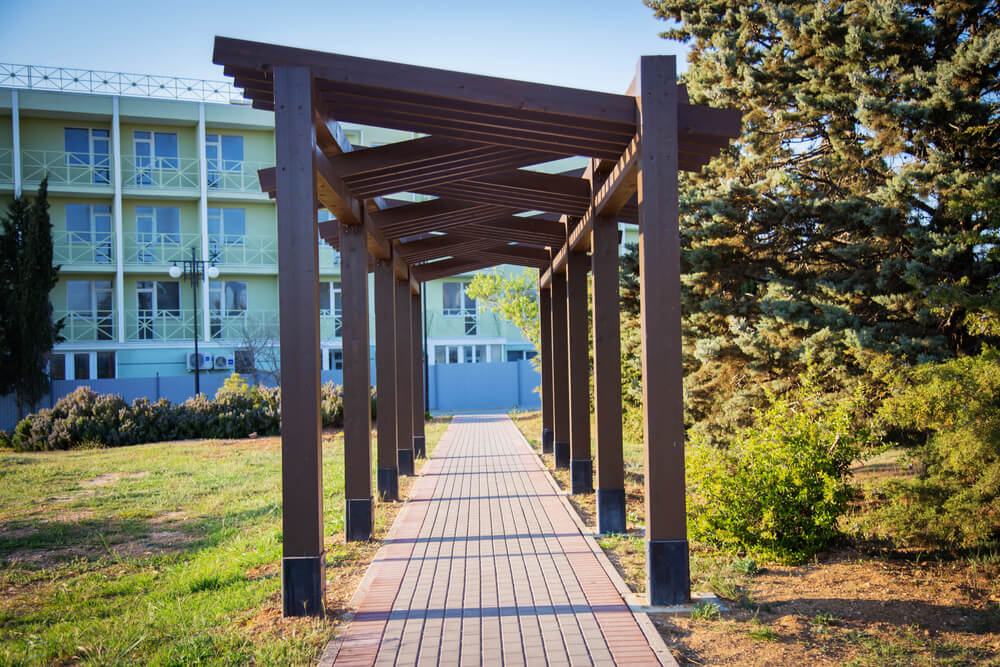Pergolas are often underappreciated by many homeowners, mainly because it’s seemingly not worth hassling over a somewhat large project for the price of having some shade in your backyard. However, there is much more to it than meets the eye, and as long as you hire a team of professionals to deal with your new project, you should see significant improvements across the board, including the most important one – better quality of life.
The process of installing a south Florida wood pergola is not as simple as it may sound. Many people decide to DIY their way out of the situation and save a bit of money, but the question is whether it’s worth risking messing up the whole project. As far as we are concerned, the answer is – no, it’s usually not worth the risk.
On the other hand, if you’re interested in learning a thing or two about the process of pergola installation, this article should give you a good idea of what it takes to do everything by yourself and why that is typically a poor choice.
The Process of Installing a Custom Pergola
Like any other project, installing a pergola requires meticulous planning and a good deal of previous experience with similar projects. This is the first reason why it’s typically a better idea to hire professionals as opposed to doing everything by yourself.
The steps are as follows:
Making Initial Decisions
Whenever you’re dealing with a construction project, the first thing you ought to do is make decisions. In this case, these decisions can be anything from the location of your pergola to the materials you would want to use. Figuring out the overall design of your new pergola is also something you should do at the very beginning of the project so that you don’t have to worry about that later.
The vast majority of landscape experts recommend that you plan out the design, materials, and the size of your pergola before doing anything else. Once you’re satisfied with your vision of the design, materials, and size – it’s time to think about the second step.

Consultations With the City
Once you have the general idea of how you want your new pergola to look like, it’s time to find out whether it can be constructed without a permit. In most cases, a sub-100 sq.ft. project is small enough to do without a license, but larger ones are likely to require some sort of permit.
Fortunately, this whole process is relatively simple and straightforward. All you have to do is check with your local planning and building department whether your project follows their rules and protocols. They will typically ask you about the dimensions of your project, materials you want to use, fire ratings of construction materials in use, etc. Essentially, it’s a somewhat tedious step, but it’s not as complicated as it may seem.
Putting the Design on Paper
Now that you have, presumably, gotten everything you need from the city, it’s time to create a written design. This is especially important if you’re building a large pergola since it will allow you to visualize your project and take care of the engineering aspect.
This is usually the first step where hiring experts is a much better idea than just DIY-ing the project. There are many reasons for this, but the most important one is the fact that experienced professionals know how to deal with unforeseen issues, design incompatibility, and much more. In fact, you are likely to lose more money if you decide to cover this step on your own as opposed to putting your trust into professionals.
The Construction Begins
Once all the aforementioned steps have been handled, it’s time to begin construction. If you have, for whatever reason, decided to do this step on your own, you ought to buy, measure, and cut everything to size. As you can assume, this requires you to have access to a broad spectrum of tools, and more importantly – a lot of previous experience with similar projects.
Given that the chances of you having the necessary skillset are reasonably low, it goes without saying that it’s much better to leave this particular step to the pros. Even if you strongly oppose the idea of hiring professionals, you’ll still need at least one more person to help you deal with this step correctly. It’s essential to keep in mind that if you mess up the measuring or cutting even by a small margin, the whole project is in jeopardy.
Paint and Protection
Once everything is cut to size, it’s time to protect the materials by priming the cut pieces. This isn’t a mandatory step per se, but it’s definitely good practice and recommended by every professional. Once again, you could do this step by yourself, but you probably don’t have space and the necessary painting equipment to ensure top-notch quality.
This process should be done in a dust-free environment by trained individuals who are familiar with the dos and don’ts.
Installation of Posts and Structure
As far as the complexity of our steps goes, this particular one is probably the trickiest. The whole structure, including the posts, should be installed with immaculate precision. By failing to do so, you risk having an uneven pergola in your backyard, which is going to be a thorn in your eye rather than a sight to behold. This is yet another reason in the sea of others as to why you should consider hiring a team of professionals for these projects.
In colder climates, the posts are positioned at least four feet deep so that they are below frost level. However, if you’re installing pergola, the posts won’t be dug as deep. Ultimately, as we’ve mentioned, one of the most important things is to ensure the posts are level so the structure can sit straight.
Dealing With Utilities
This is often an optional step because not all people want switches and wiring under their pergola. However, it’s probably a good idea to install a lighting system, at the very least. Depending on which company you decide to hire, this step is either done by a 3rd party electrician or a qualified member of the company’s team. Evidently, it would be best if you never tried to wire your pergola on your own unless you’re a qualified electrician.
In order for everything to work as intended, you should hire a contractor rather than DIY-ing your way out of the situation.

Wrapping Up the Project
Once the utilities have been handled, it’s time to address the little things and wrap up the project. In some cases, professionals will address the roofing aspect during this step, while most professionals will address roofing during the installation of posts and structure. Feel free to decorate your new space during this step, and you could paint the wood one more time if you feel inclined. This offers extra protection against harsh weather conditions, but it’s not a mandatory step.
Have you tried to install a pergola by yourself? How was your experience? If you’d like to share some of your experiences with us, don’t hesitate to leave us a comment and tell us all about it! If you’d like to read more about the best ways to install, maintain, and choose the right patio designs, read our other articles!




